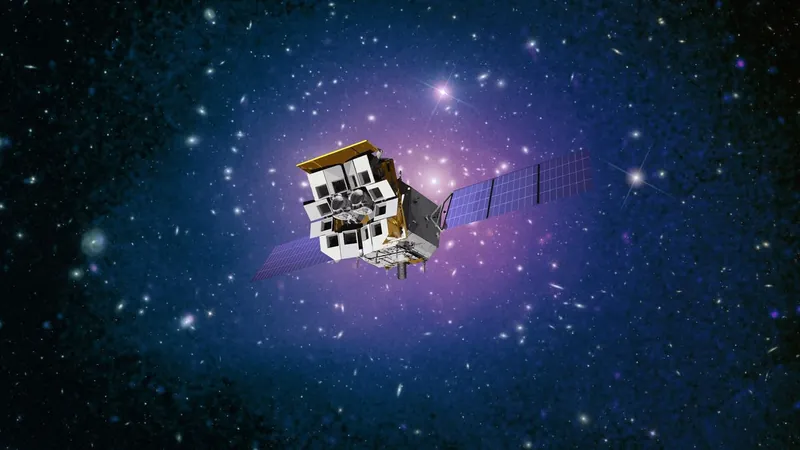
China's Einstein Probe: Revolutionizing Astronomy with 'Lobster Vision' and Early Breakthroughs!
2024-11-05
Author: Noah
A New Era in Astronomical Discovery
A new era in astronomical discovery is upon us, thanks to China's cutting-edge X-ray space telescope, the Einstein Probe, which is already making waves during its commissioning phase! Launched on January 9 aboard a Long March 2C rocket, this remarkable observatory is equipped with innovative lobster-eye optics, setting it apart from traditional telescopes.
Significant Milestones Achieved
As it orbits Earth, the Einstein Probe has been busy refining its instruments, and recent announcements from the Chinese Academy of Sciences (CAS) reveal that the telescope has already achieved significant milestones. On October 31, CAS showcased its initial findings, including a treasure trove of transient events—mysterious short-lived phenomena where celestial bodies such as stars or black holes exhibit sudden changes in brightness.
Extensive Space Surveys Conducted
Remarkably, the observatory has conducted extensive space surveys capturing images of a wide range of transient celestial objects. These include not just stars and white dwarfs, but also neutron stars, black holes, gamma-ray bursts, and supernovae. According to Yuan Weimin, the principal investigator for the mission and a leading researcher at the National Astronomical Observatories of China (NAOC) under CAS, they have cataloged around 60 prominent transient celestial objects among nearly 1,000 potential candidates, alongside approximately 500 stellar flares.
Gamma-Ray Burst Detection from the Early Universe
One of the most exciting discoveries from the Einstein Probe is its detection of a gamma-ray burst from the early universe. Yuan pointed out the satellite's exceptional sensitivity, stating, “We observed a radiation burst that lasted nearly 1,000 seconds, whereas other international gamma-ray burst satellites only recorded it for 50 seconds.” This capability means the Einstein Probe can unveil previously hidden physical processes, affording astronomers the chance to study distant cosmic events like never before.
Potential New Class of Transient Objects
In another thrilling find, the probe flagged a potential new class of transient objects. On April 8, it captured an X-ray flare coded EP240408a. The unusual emissions lasted for approximately ten days, hinting at an intriguing event, possibly involving the disruption of a white dwarf by a black hole. International researchers have speculated that this event may represent an entirely new category of transients, adding more layers to our understanding of cosmic phenomena.
Endowed with the Name 'Tianguan'
Adding to its accolades, the Einstein Probe has been endowed with the name "Tianguan," in homage to Chinese astronomers who documented the historic supernova SN1054 in 1054 AD, which gave rise to the iconic Crab Nebula.
A Poised Future
With an initial operational period of three years that could be extended by another two, the Einstein Probe is poised to redefine our cosmic catalog and provide insights into the mysteries of the universe! Keep your eyes on this groundbreaking telescope as it continues to push the boundaries of what we know about the cosmos!









 Brasil (PT)
Brasil (PT)
 Canada (EN)
Canada (EN)
 Chile (ES)
Chile (ES)
 España (ES)
España (ES)
 France (FR)
France (FR)
 Hong Kong (EN)
Hong Kong (EN)
 Italia (IT)
Italia (IT)
 日本 (JA)
日本 (JA)
 Magyarország (HU)
Magyarország (HU)
 Norge (NO)
Norge (NO)
 Polska (PL)
Polska (PL)
 Schweiz (DE)
Schweiz (DE)
 Singapore (EN)
Singapore (EN)
 Sverige (SV)
Sverige (SV)
 Suomi (FI)
Suomi (FI)
 Türkiye (TR)
Türkiye (TR)